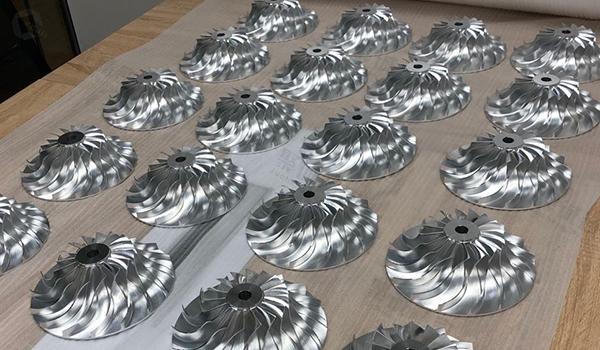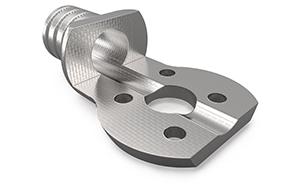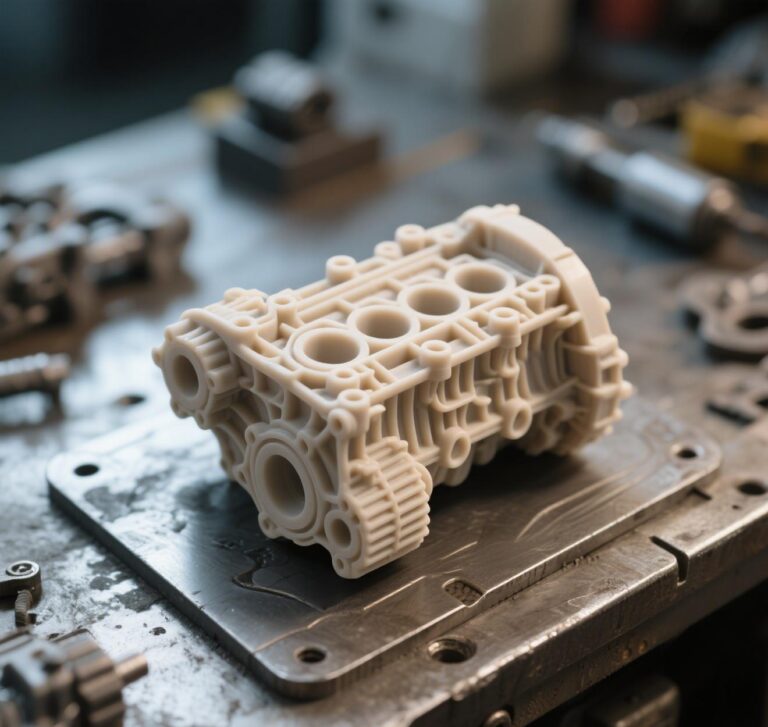In the battlefield of automotive innovation, rapid prototyping is the key bridge between virtual design and physical production. It is not only a physical vehicle for designers’ ideas, but also a strategic shield to avoid the loss of millions of molds. When Tesla uses 3D printing to compress the validation cycle of instrument panel to 72 hours, and when BMW realizes 0.02mm precision of hood assembly by CNC cutting – these top automobile companies have long elevated automobile prototyping to the core battlefield of technology decision-making.

⚙️ Chapter 1: Material Science: “Genetic Selection” for Precise Matching of Automotive Application Scenarios
ABS Plastic: The Cost-Effective King of Interior Validation
Performance Positioning: Impact Resistance + Ease of Processing + Cost Balance
Deadly Details:
Inadequate drying → water content >0.03% → bubble burst rate after painting rises 80%
Melt temperature >240℃ → molecular chain degradation → tensile strength plummets 30%
German car enterprises practical case: Volkswagen ID. series door prototype using glass fiber reinforced ABS, bending modulus increased to 4500MPa, through 100,000 times open and close Test
PC (Polycarbonate): Optical Guardian for Transparent Parts
Transmittance game:
Native PC transmittance 90% → preferred for headlight lenses
but no UV hardening treatment → outdoor exposure for 2 years → yellowing index ΔE>5
Medical grade process transplantation: Medtronic respiratory mask prototype technology used for Mercedes-Benz headlamp anti-fog coating – double sided nano-coating makes transmittance attenuation rate <1%/year
PA (nylon) Durable engine for powertrain
Temperature and humidity sensitive traps:
No humidity treatment → 1.5% water absorption → 0.8% expansion of gearbox prototype size → engagement failure
Ford Hybrid Solutions:
PA66 + 30% carbon fiber reinforcement → continuous temperature resistance of 160°C → motor mount prototype passes 300-hour vibration test
Aluminum Alloys: A Metal Revolution in the Lightweight Arena
Heat Treatment Code:
| norm | T6 process | T73 process |
|---|---|---|
| Strengthening mechanisms | Peak aging (MgZn₂ phase maximization) | Over-ageing (spheroidization of precipitated phases at grain boundaries) |
| Intergranular corrosion risk | High risk (continuous precipitation at grain boundaries) | Very low risk (isolated precipitation phase) |
| Typical drop | – | Yield strength reduced by 9% (≈30 MPa) |
Surface strengthening must-have: Hard anodizing film thickness 50μm → Hardness > 500HV (beyond tool steel)
🚘 Chapter 2 Component Manufacturing: Functional Scenario-Driven Prototyping Laws
Interior components: an experience laboratory for human-computer interaction
Tactile tipping point:
Instrument panel button travel force >3N → 45% increase in driver mis-touch rate
Material mix and match innovation:
Lexus concept car center console: PC/ABS skeleton + TPU soft rubber cladding → medical-grade tactile sensation achieved
Exterior components: a balancing act between wind resistance and aesthetics
Lampshade Optical Trap:
Wall Thickness Deviation > 0.2mm → Light Refraction Zebra Pattern → NCAP Score Downgrade
Rebirth program for chrome-plated parts:
Merck nano-silver coating technology → replacing hexavalent chromium plating → adhesion up to ASTM 5B class
Functional Components: Survival Challenges in Extreme Environments
Hood Heat Deformation Pre-control:
7075 Aluminum Alloy Prototype + Thermal Imaging Simulation → Locate High Temperature Deformation Points → Optimize Heat Dissipation Vents Design
Fatigue trap of chassis parts:
No simulation of forging flow line → CNC direct milling → fatigue life is only 30% of mass-produced parts
🖨️ Chapter 3: The Process Revolution: A Triad of Technology Ecologies
CAD design: the precision origin of the digital twin
Parametric disaster case:
Chamfer not associated with wall thickness variable → chamfer 0.5mm reasonable when wall thickness is 2mm → chamfer still 0.5mm when wall thickness is 4mm → risk of stress concentration rises 7 times5
Toyota avoidance formula: R angle = (wall thickness × 0.3) + 0.2mm
CNC machining: rigid-flexible game on the battlefield of micrometer scale
Five-axis linkage life and death line:
tool radial runout>5μm → thin-walled parts resonance → dimensional overshooting 0.1mm1
Makino machine tool solution: HSK-E63 toolholder + active vibration damping system → machining vibration <1μm4
3D Printing: Dimensional Strike for Complex Structures
Technology disruption data:
45 days for traditional process → Jinshi JS-1700-H large-scale light curing → 12 days for complete vehicle prototype
Lattice structure breakthrough:
BMW seat lightweight prototype: SLM-printed titanium alloy dot-matrix structure → 40% weight reduction passes crash test
Low Pressure Infusion: Cost Butcher for Small Volumes
Polyurethane black technology:
BASF Elastocast® system → in-mold reaction molding → physical properties comparable to injection molded ABS
Economy inflection point model:
when quantity N > 200 → steel mold unit cost advantage emerges
when N < 200 → low-pressure infusion cost is only 15% of steel mold
🔬 Chapter 4 The QC system: a preview battlefield for million volume production
Nanoscale Trial of Dimensional Measurement
CMM confidential case:
No thermostatic control (23±1°C) → aluminum alloy thermal expansion 0.01mm/°C → misqualification rate of 20%
General Motors standard: critical hole tolerance zone <±0.05mm → Renishaw PH20 probe required
Microdetection of Surface Defects
The Paint Adhesion Code:
Sanding roughness Ra0.8-1.2μm → sweet spot for optimal coating adhesion7
Q-Lab UV Chamber, USA: 1500 hours of testing → ΔE <1.5 to meet standards
Failure prediction for assembly testing
Rattle Alert System:
Bosch NVH Sensor Array → Capture >20dB rattle frequency → Locate snap interference points
Toyota Fault Prevention Model:
Tolerance Chain Overlay Simulation → Predict 14th part assembly failure → Optimize hole-shaft fit strategy
📦 Chapter 5 Transportation management: a survival test for transcontinental supply chains
Dynamics Equations for Vibration-Proof Packaging
Resonance frequency traps:
No vibration spectrum analysis done → 5-200Hz random vibration in transport → Brittle parts fracture rate >30%
SCHUTZ solution from Germany:
EPP foam molding + frequency response optimization → attenuate resonance peaks by 12dB
Tracing the digital genes of the system
QR code laser etching:
6061-T6 parts etched to a depth of 0.05mm → alcohol wipe 100 times does not come off
Blockchain depository:
material batch number + processing parameters + test report → uplink permanent traceability
🌟 Conclusion: Dancing on a tightrope of speed and precision
The essence of automotive rapid prototyping is trial and error at a controlled cost in exchange for zero risk in the mass production phase. When you catch design flaws in the micron-level tremors of CNC machine tools, and anticipate aerodynamics in the layered light and shadow of 3D printing – these seemingly cold prototypes are quietly reshaping the genes of future cars.






One Comment